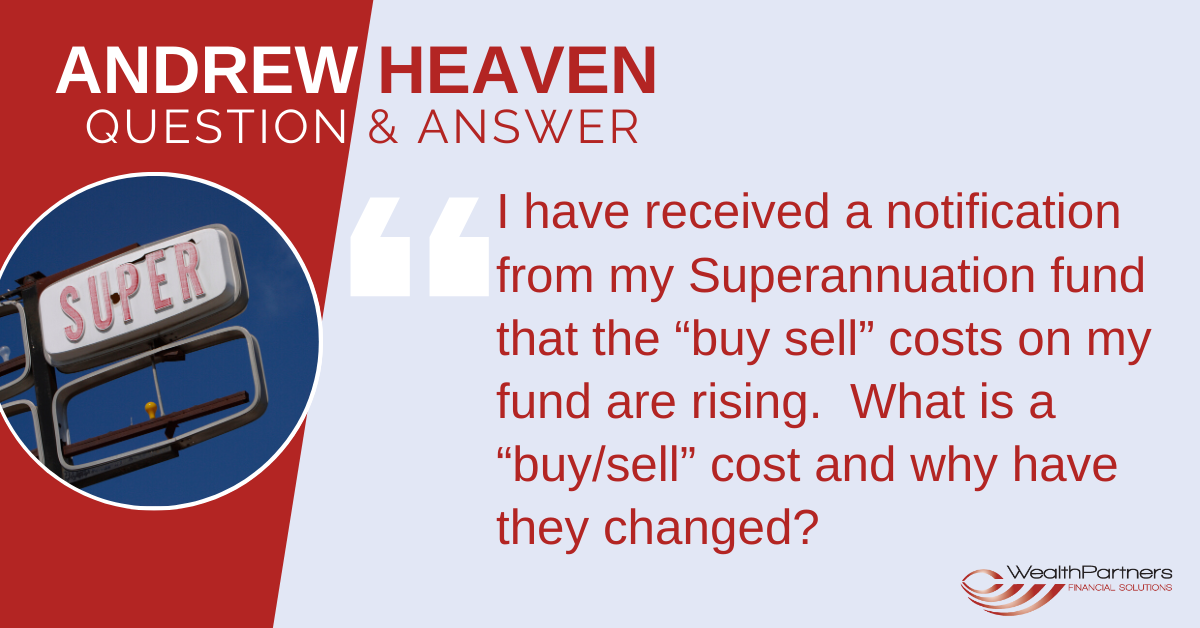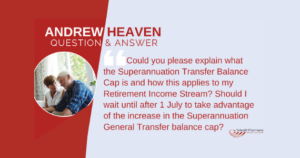
Q: I have received a notification from my Superannuation fund that the “buy sell” costs on my fund are rising. What is a “buy/sell” cost and why have they changed?
A: When you invest or divest money in a Managed Fund, the fund manager may incur transaction costs such as broking, stamp duty, taxes to buy or sell the underlying assets in the managed fund portfolio. The fund levies these costs to the investor who is entering or exiting the fund. The cost of the transaction is referred to as a “buy/sell” cost or spread or “transaction cost allowance”.
Existing investors in the fund are not levied these costs as it would be unfair to penalize members of a fund who are not generating the transaction costs. The “buy/sell” spread may vary depending on the flow of money into or out of a fund on a given day.
Details of the estimated buy/sell spread should be disclosed in the Product Disclosure Statement (PDS) of the fund. Estimates of Buy/sell spreads will vary depending on the type of assets being bought and sold and the complexity of the underlying portfolio. Buy/Sell spreads in normal market trading conditions will typically vary from between .05% for assets such as fixed interest up to around 0.3% for property. So if the average buy/sell spread of your portfolio is 0.18% and you are switching $500,000 of investments, then the cost will be $900. However as a result of recent volatility and substantially higher volumes of switching, some Buy/sell spreads have risen dramatically. In some cases up to 16 times!
The transaction cost may also vary depending on whether you are buying or selling an investment. For example if you are investing into a fund, the buy spread cost may be 0.06% however if you are selling out of a fund the sell spread may be 0.4% or 7 times higher.
The transaction cost of making an investment switch will need to be taken into consideration in making your decision whether to switch or not. As market volatility and the volume of switches subsides, the buy/sell spreads should revert to previous levels. In the interim, make sure you understand all costs associated with any investment transaction and factor this in to your long term investment planning strategy.

